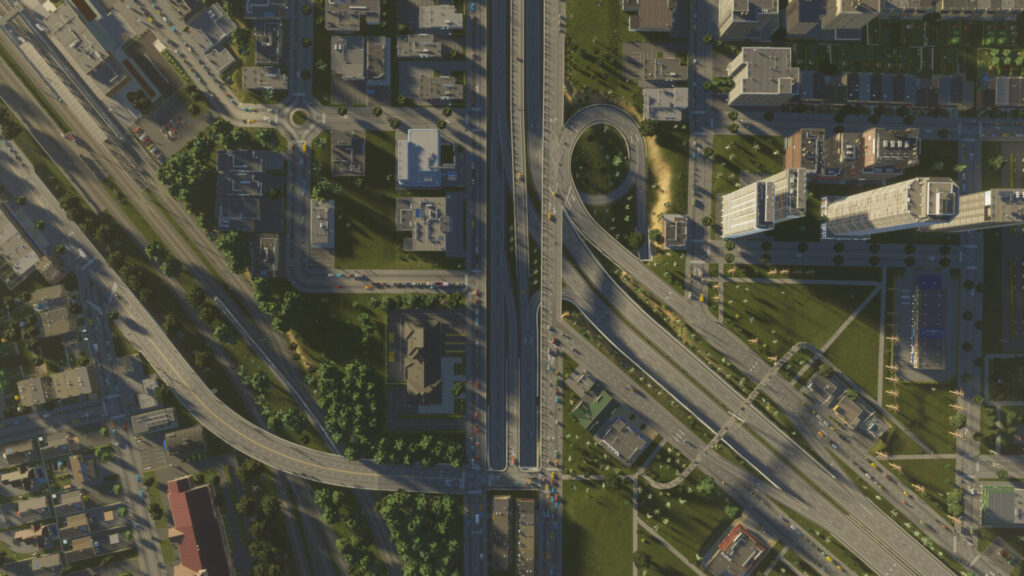
In the exciting new release of Cities Skylines 2, a highly anticipated addition takes center stage: the introduction of traffic accidents.
Table of Contents
As you strive to build and maintain a thriving city, you’ll encounter both the positive and negative aspects that come with urban life. This includes not only natural disasters but also man-made incidents like traffic collisions and highway pileups.
Now, you might be wondering how on earth you can effectively prevent and handle road accidents in Cities Skylines II. With countless cars bustling through the streets, it’s simply impossible to personally control each and every vehicle or provide driving lessons to the non-player characters (NPCs).
However, fear not! There are still ways to tackle this challenge. By implementing smart city planning strategies, optimizing road networks, and enhancing traffic flow, you can significantly reduce the likelihood of accidents occurring. Additionally, investing in advanced traffic management systems and technologies can help you better monitor and respond to potential hazards.
Remember, building a successful city in Cities Skylines 2 means embracing the responsibility of managing both the ups and downs. By staying vigilant and implementing effective measures, you’ll be well-equipped to handle the complexities of traffic accidents and ensure the safety of your citizens.
According to the developers, accidents on the roads in the game are not random. There is always a specific reason behind them, such as heavy traffic, a vehicle losing control, a planning issue, or a deliberate strategy set by the developers.
The percentage of accidents is determined for each road segment and is compared to other features in the game. These features can include various natural occurrences like road conditions, weather conditions, or even disasters.
When the calculated system decides it’s the right time for an accident, the vehicle will lose control, causing chaos and disturbance. Additionally, if there are any objects in the vehicle’s path, they can also be destroyed. In the case of other vehicles being present, the accident can be fatal and result in loss of life.
Once an accident happens, road maintenance, ambulances, and police will promptly arrive to clean up the area. This process is automated, making the cleanup relatively easy. However, it also means that the road or area where the accident occurred will be temporarily blocked. Due to this automated system for dealing with traffic accidents in Cities Skylines II, it’s important to be prepared for the aftermath of such a crisis.
After simulating accidents, the question arises: how can we prevent them? It’s true that we can have some fun by causing a few accidents and observing the outcome, but on a larger scale, we must find ways to manage them effectively. This way, traffic won’t always be a nightmare and the likelihood of accidents will decrease. After experiencing a few minor crashes, it’s important to take charge and rectify the situation.
Let’s begin by learning how to identify when a road is becoming too narrow for the number of vehicles that regularly pass through it. To address this, it’s important to either construct additional roads or ensure there is enough space to build new ones whenever the opportunity arises.
It is crucial to have multiple roads leading to every destination. This prevents all vehicles from congesting at a single entrance and helps avoid traffic jams. In the event of a cleanup after an accident in Cities Skylines 2, these alternate roads will also assist in diverting traffic. Additionally, incorporating roundabouts at intersections can be beneficial.
To enhance safety and prevent accidents and traffic congestion, it is essential to allocate a separate lane for heavy vehicles such as trolleys and buses in Cities Skylines II. Prioritizing this feature and implementing it as soon as it becomes available can make a significant difference. When planning for residents, it is important to consider the population and allocate lanes accordingly. Neglecting this aspect can lead to disruptions and cramped conditions.
If the city feels overwhelming, just head to the Info icon at the top of the screen. There, you can find areas with a high likelihood of heavy traffic, indicated by color. It’s best to take action when the color is orange, before it becomes too severe and reaches the red zone. Once you’ve made the necessary adjustments, take a moment to observe the road before proceeding.
Additionally, it’s important to ensure that the roads are in good condition. You can do this by utilizing maintenance services specifically designed for roads. These services include installing streetlights and conducting regular checkups to keep the roads in optimal shape.